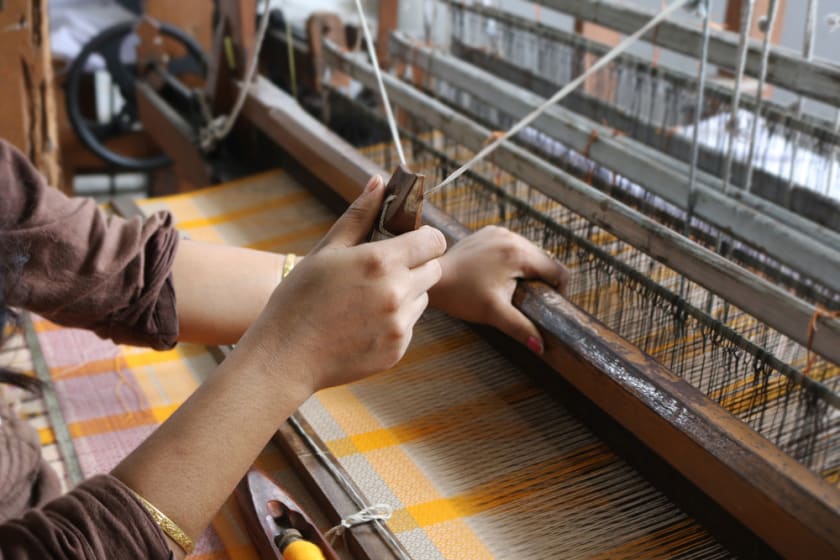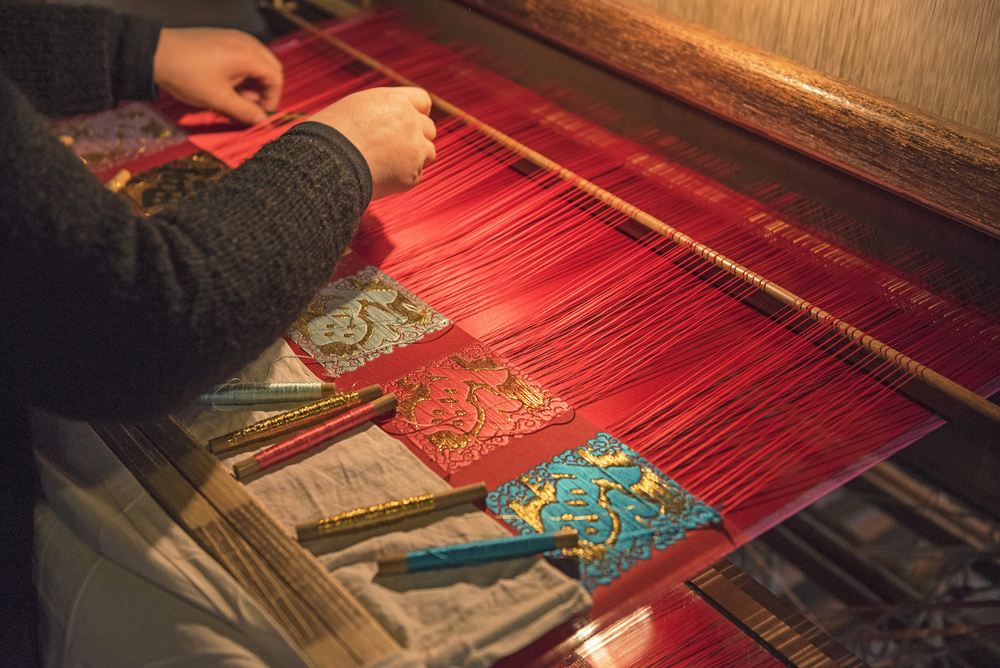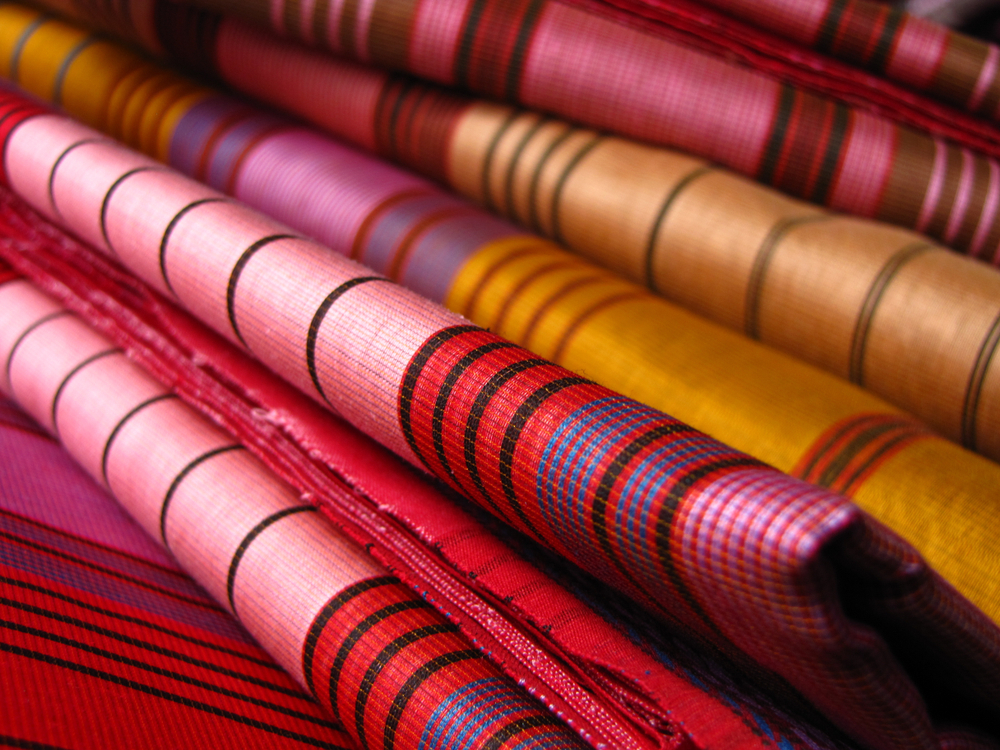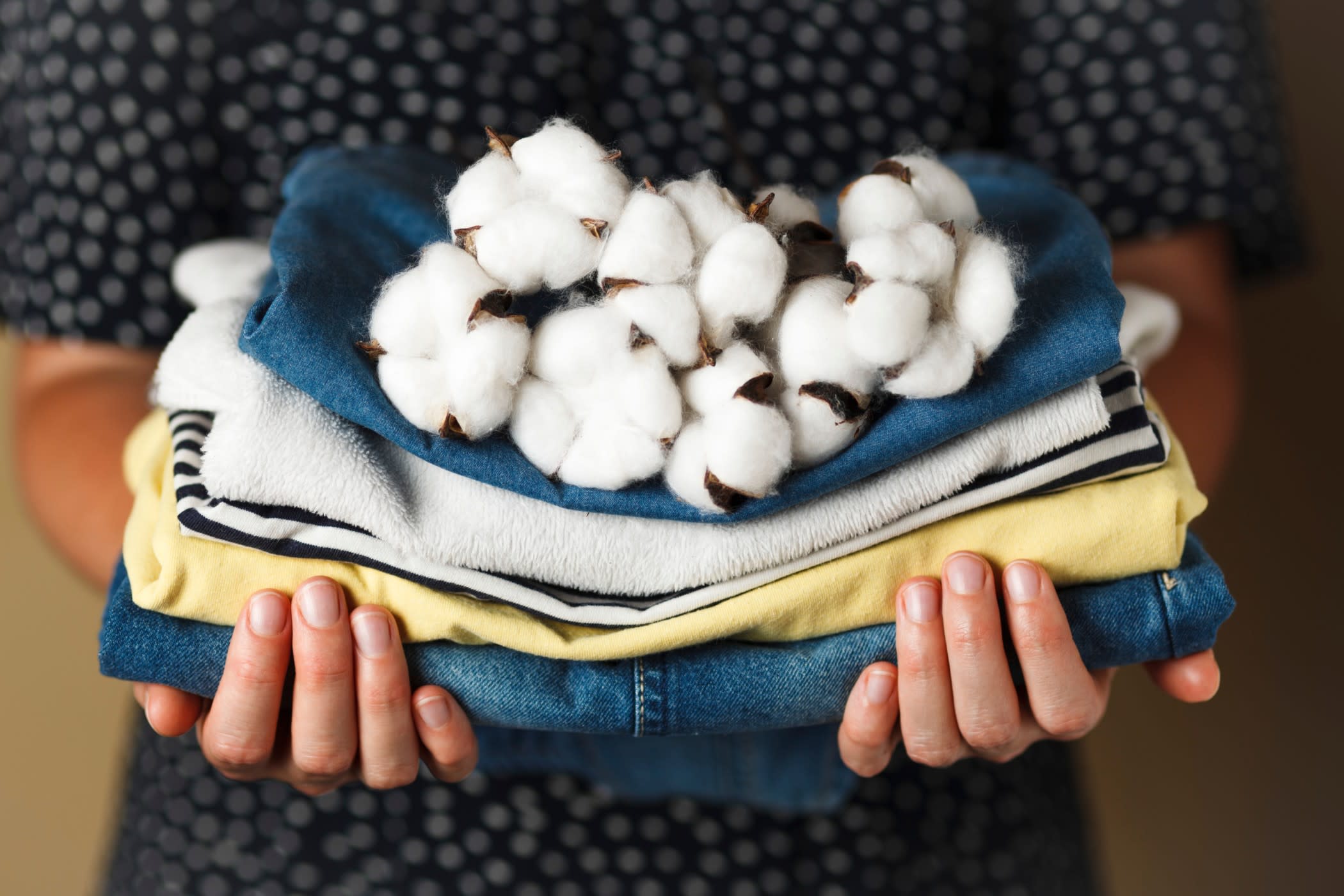Handloom's Contribution Toward Green Fashion



Several industries around the world have been fine-tuning their operations toward a more sustainable business practice. The fashion industry has made many efforts to reduce waste, energy consumption, and fast fashion. However, with growing concerns from the world authorities on the amount of waste generated every day, the need for eco-friendly clothing is urgent.
Sustainability is the efficient use of current resources without compromising the demands of future generations. Sustainable fashion is both environmentally sensitive and ethical fashion. From resourcing to production to sale, the whole process is streamlined in a way that the carbon footprint is reduced.
India’s contribution to eco-friendly clothing is the handloom sector. Handloom is a sustainable kind of weaving that does not require electric machinery. Its origins may be traced back to the Indus Valley Civilization. Because handloom woven fabrics are woven by hand, the artisans are quite gentle and soft with the fabric. It makes the clothing pleasant and long-lasting. Furthermore, because the fabric used in handloom items is less stretched, they are prided for their breathability.
Handloom: A brief History
In post-independent India, the charkha was widely used to spin cotton and turn it into cloth. A separate weaving society existed in every hamlet in India, producing Handwoven and Handspun fabrics using small instruments such as charkhas.
Before independence, the British noticed that industrialisation was more profitable than handwoven cloth. India then became a raw cotton exporter. After British officials imported machine-made yarn into the country, the weavers were forced to quit weaving. The majority of weavers in the country lost their jobs due to this. The handloom business gradually suffered due to the intermediaries who caused disagreements. The handloom became obsolete with the introduction of machinery and electric looms.
Handlooms and spinning mills continued to operate in India after 1945. However, many weaving houses now use machine-spun yarn. These fabrics are called Handloom or handwoven. In contrast, fabrics manufactured from handspun yarn are called khadi fabrics. After independence, the handloom fabrics faced no competition. They were affordable to the general public. As a result, the cloth was extensively utilised and accessible to all.
However, since 1985, particularly during the liberalisation of the 1990s, the handloom sector has had to compete with low-cost imports and design imitators from power loom factories. Furthermore, government financing and policy protection had also plummeted due to a struggling economy. As a result, the price of natural fibre yarn had skyrocketed, and people could not afford it with their static wages. Over the years, the income of the handloom weavers stayed the same while prices of materials rose.
India's handloom industry has a long history of beautiful and unrivalled artistry. Compared to other countries globally, it has a broad, rich textile tradition, with a large selection of textiles of various designs created using various processes. Each region's speciality in textile weaving develops as a result of its location, climate, and cultural influences. Colourful weaving is common among northern artisans. Fabrics are usually embellished with very detailed embroidery.
Handloom and Sustainability

Handloom has always been about using environmentally friendly methods to make eco-friendly clothing. As India is so diverse, the looms used to weave the fabric relate to the location and the particular raw material used. For example, looms used to weave Pashmina shawls and Kani shawls are made of thin threads made of softwood. The spindles used to spin the same are very light. The uniqueness of handlooms is that the techniques and equipment are passed down from generation to generation, undisturbed by environmental variables.
Weavers and artisans have immersed their life in this craft. They use age-old techniques, including motifs inspired by imagination and century-old folklore. Their families have been following processes that are inherently sustainable to this day. Eco-friendly clothing was not a reform but has always been the case for these families.
Today, even though they use a few mechanical instruments to help them with productivity, the essential values remain the same. Manufacturing is mainly sustainable in most parts of India. Ethical manufacture is also an integral component of sustainability. Artisans and conservatory groups ensure that every one of the products is made with the least amount of waste generated. There is no such thing as zero-waste manufacturing, but handlooms are the closest that comes to it.
Many groups and societies in India have made it a point to generate a steady flow of income for weavers and artisans. Some awareness activities for eco-friendly clothing include intercity exhibitions, summer camps, custom projects for bridal parties, etc.
Handloom items include the use of natural, environmentally favourable raw materials. Mulberry silk is used for Mysore silk sarees, delicate chanderi silk, tussar silk, and cotton mul muls of Madhubani. Kosa, a special type of tussar, giccha, and more durable silk, pure silk, crepe, and chiffon used in Jammu & Kashmir, high-quality pashmina wool, cotton used in Kota Doria, Chettinads are some popular materials.
The diversity of raw materials can be explored further, but each one provides an end product that is not only distinctive but also serves as a link between nature and the consumer, thereby meeting the condition of having a minimal environmental impact. The usage of environmentally friendly materials does not stop with raw materials; it also extends to the compounds used in processing and treatments. Natural colours derived from vegetables, plants, or minerals have a long history.
Sustainable Fashion Around The World
Sustainable and ethical fashion is a method of sourcing, manufacturing, and designing clothing that optimises the advantages to the fashion industry and society while minimising the environmental effect. The two notions are similar in ideology, but they each have slightly distinct issues that are equally important to the fashion industry's future and eco-friendly clothing.
The United Nations Alliance for Sustainable Fashion collaborates with UN agencies and other partners aimed at helping to achieve the Sustainable Development Goals through concerted action in the fashion industry. The UN Alliance works to promote programs and policies that ensure that the fashion industry and corporate houses contribute to the fulfilment of the targets set by the “Sustainable Development Goals”. Another goal of the Alliance is to assist fashion departments under the UN, collaborate to achieve the goals.
Handloom’s Future

As fast fashion takes over most of the market, people are actively turning towards eco-friendly clothing due to its long-lasting nature. There is no use of power with handlooms. All raw materials are sourced naturally and ethically as a measure towards green fashion. As a result, there is minimal material waste, and the complicated process creates speciality employment opportunities in rural India. These aspects combine to make the handloom industry one of the most environmentally friendly and long-lasting in the fashion industry.
Because of the constant need to discard and replace fashion items with new ones, consumers' attitudes on the emotional value of their things have shifted. As a result, most marketing and advertising methods are geared around increasing sales rather than cultivating true values.
When consumers are made aware of the stories behind handlooms, it can help to shift their thinking. Some of these tales are as lovely as the handwoven goods. This is why it is vital to reinvigorate this industry in place of mass-produced commodities.
Developing the Handloom Industry
The National Handloom Development Program (NHDP) program was set up to approach the handloom industry in a holistic, diverse, and integrated sense. The program supports weavers and artisans all over India.
The program provides handloom marketing assistance: The goal is to give weavers and handloom organisations direct marketing platforms to sell their products to consumers.
In the e-commerce initiative to give weavers and artisans a direct marketing platform, 21 renowned eCommerce businesses have been hired to advertise handloom products online.
Indian Handloom Brand was founded in 2015 with the goal of establishing a niche market for high-end handloom items. It is exclusively offered for high-end, genuine handloom products.
Brand awareness, brand building, campaigns, an open door policy for e-marketing, pan-India partnerships with retail outlets.
Another step towards conserving this art form was to encourage artisans and their children to educate themselves at some of the best fashion schools in the world. The National Institute of Fashion Technology (NIFT) provides special courses to artisans that revolve around technical education. A platform such as this can help make handlooms and following eco-friendly clothing a mainstream fashion genre,
Conclusion
While the road to sustainability is not simple, understanding what constitutes genuinely sustainable and ethical fashion is now more important than ever. Eco-friendly clothing should not be an exception but the norm. Shopping sustainability is an individual's choice. However, several designers have been making eco-friendly clothing at reasonable rates for a while now.
At Fashinza, sustainability is one of the top priorities. Designers looking for raw material and eco-friendly production can turn to Fashinza without hesitation. They handle the entire production process from sourcing to delivery.
The platform allows designers and artists to place orders, track them, get daily production updates, contact manufacturers, and pay for production costs easily. The operations are run keeping the designer's vision, ethics, and goals in mind. Overall, this is an excellent way for artists to monetise their fashion without dealing with supply chains and such.



















